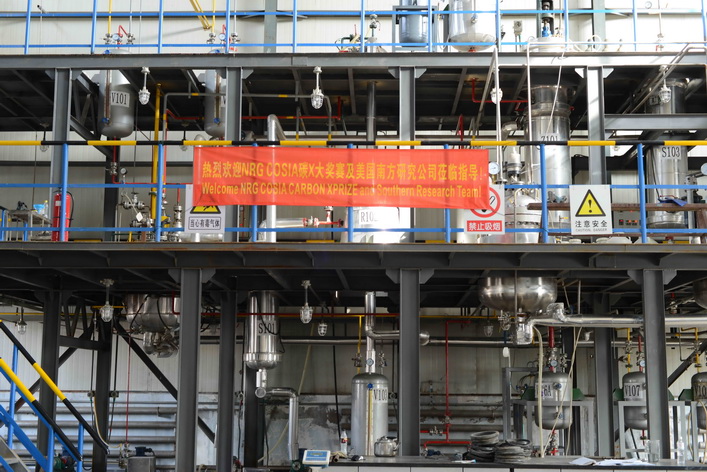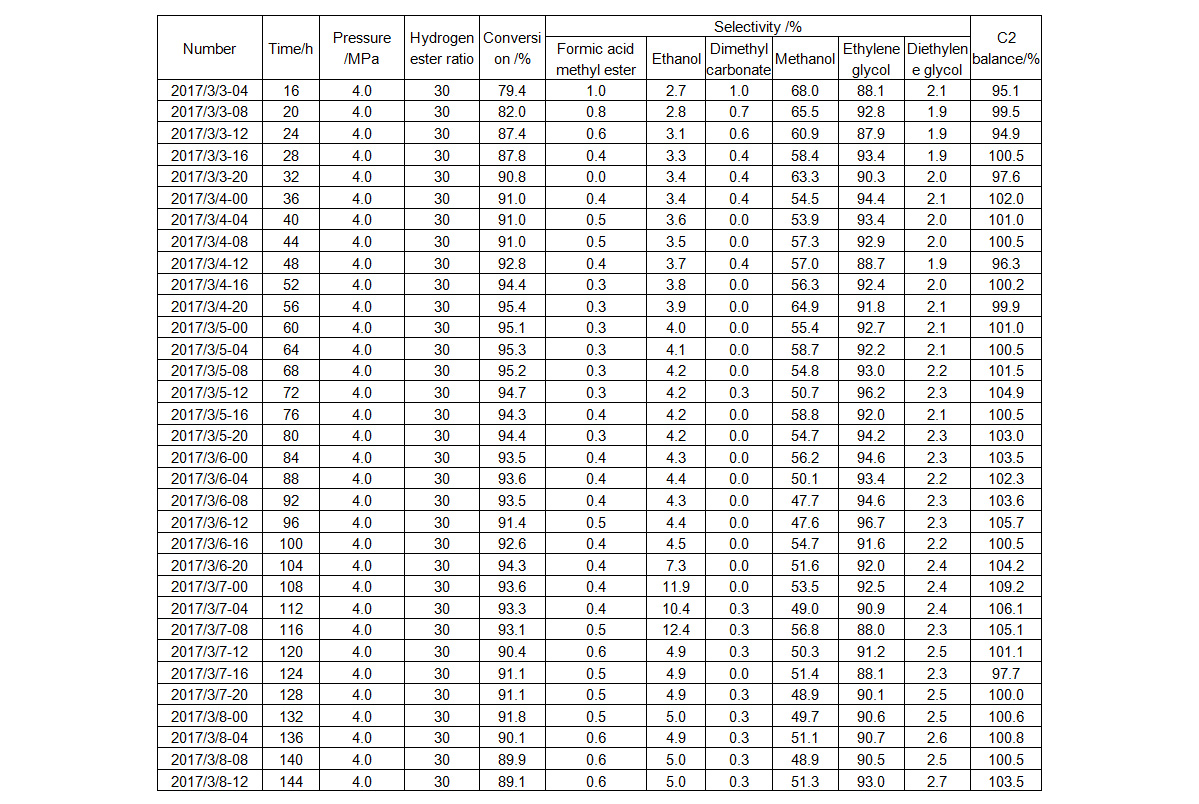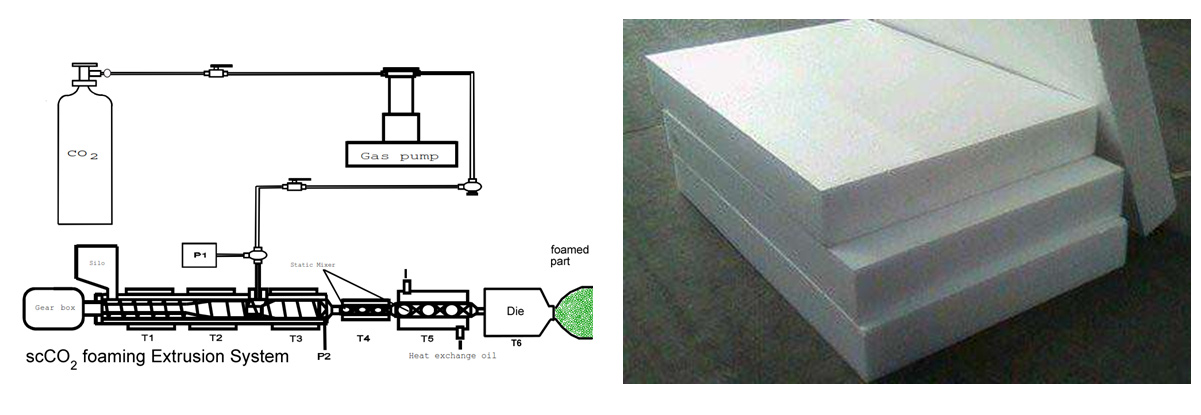


Pilot CO2 Capture System

Pilot CO2 Conversion System
2) Our team has designed a new process for Carbon dioxide conversion. CO2 as raw material, direct synthesis of ethylene carbonate. Compared with the industrial mature
Shell Omega process, our process has a high catalytic activity, good selectivity, and has a 100% atomic economy.

Efficient production of methanol (MeOH) and Ethylene Glycol (EG) via hydrogenation of cyclic carbonates using metal–silica nanocomposite catalysts, which has been developed over ten year’s R&D. Our catalyst system’s major advantages are high efficiency with > 95% selectivity and yield for both MeOH and EG, energy saving, running at 120 - 180 oC, instead of over 500 oC for normal CO2 conversion, and economically feasible with non-precious metal nano-catalysts, compared to cobalt and ruthenium based catalysts.
Ethylene glycol and methanol production process:
Table: Product gas chromatographic data in ethylene glycol and methanol synthesis

3) We have developed one of the most advanced super critical CO2 foaming of polymers with nano cellulose fiber to make super strong and light foamed products with density of 25kg/m3. Materials can be processed are PP, PVC, PS, PET with nano cellulose fiber, including nano wood fiber, straw, flax fiber, etc. The microscopic foaming will use 3% - 20% wt CO2, and 14 - 40 times foamed, foamed product's density 25 - 300 kg/m3, much lighter than other type of foaming and 100% environmental friendly. Currently, either Freon foaming agent, or chemical foaming agent is widely used, the former emits toxic gases, the later emits CO2. With nano fiber added and well dispersed, the compression strength of the final foamed products can be 1000 - 2000 KPa, better than Dow Corning.

